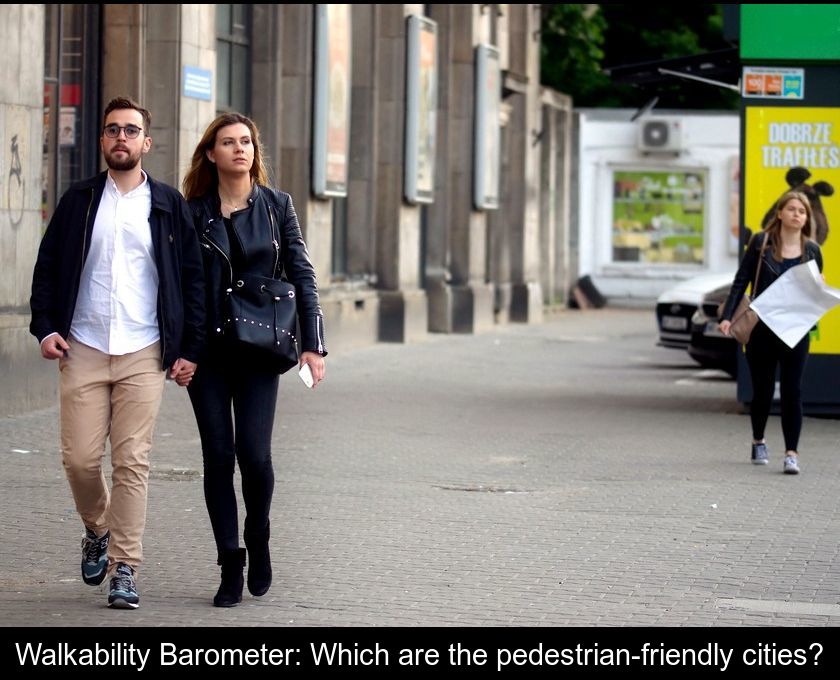Walkability Barometer: Which Are The Pedestrian-friendly Cities?
Since 2021, the Place aux Piétons collective has launched a walkability barometer for cities and villages in France. We invite you to discover the principle and results of this ranking which honors pedestrian-friendly communities.
What is the Walkable Cities Barometer?
The "Walkable Cities and Villages Barometer" is a ranking established on the same principle as the bicycle-friendly cities barometer.
This ranking was created by the "Place aux piétons" collective to recognize pedestrian-friendly cities and villages. This list highlights municipalities of all sizes that offer safe walking routes.
This initiative is supported by the French Hiking Federation, ADEME, the Ministry in charge of Transport, and the Ministry of Sports and the Olympic Games.
How is this ranking established?
The Walkability Barometer for cities and villages is the result of a national survey conducted among pedestrians. The first ranking, published in 2021, allowed for the rating of 200 cities and villages after collecting responses from 68,000 people.
For the second edition of this barometer, nearly 70,000 participants were surveyed. 42,400 complete questionnaires concerning more than 4,600 municipalities enabled an assessment of the walking conditions in France. In the 230 municipalities with the highest number of respondents, the pedestrians' feelings and practices could be evaluated more precisely.
The questionnaire used to assess the walkability of French municipalities revolves around 5 indicators:
• the daily perception of pedestrians.
• the safety of walking.
• the comfort of walking.
• the planning for pedestrians.
• the actions of municipalities in favor of walking.
What are the results of the 2023 Walkable Cities Barometer?
The second barometer of walkable cities and villages was published on September 12, 2023. This national survey revealed a very slight overall improvement in the perception of pedestrians in urban areas compared to 2021.
However, walkability in France remains highly unsatisfactory in view of citizens' expectations, as highlighted by the average national score of 9.2 out of 20 obtained for the overall pedestrian feeling.
The cities that topped this ranking are:
• Chavagne in Ille-et-Vilaine for municipalities with less than 5,000 inhabitants.
• Acigné in Ille-et-Vilaine for municipalities with less than 20,000 inhabitants.
• Coudekerque-Branche in the North for municipalities with less than 50,000 inhabitants.
• Vincennes in Val-de-Marne for municipalities with less than 100,000 inhabitants.
• Le Havre in Seine-Maritime for municipalities with less than 200,000 inhabitants.
• Rennes in Ille-et-Vilaine for municipalities with more than 200,000 inhabitants.
What is the purpose of this investigation?
The Walkability Cities and Villages Barometer is the result of a survey that provides a more accurate, nationwide perspective on the space allocated to pedestrians in public areas.
While walking is beneficial for health, climate, and energy saving, in reality, not all cities and villages in France are "walkable."
This barometer is a powerful tool for communication and advocacy to ensure that public authorities implement a genuine policy in favor of walking.
How to improve walkability in municipalities?
The aim of this walkable cities and villages barometer is to encourage decision-makers to ensure the safety and comfort of pedestrians throughout the French territory. The increasing participation of cities and respondents demonstrates the success of this initiative.
This survey also reveals the measures that should be taken to make the urban environment more conducive to pedestrian mobility. Surveyed users have advocated for measures such as:
• securing sidewalks.
• combating parking on pedestrian spaces.
• creating secure pedestrian routes, well separated from cyclists and other urban rolling devices like electric scooters, segways, unicycles, and hoverboards.
• adding amenities that make walking more enjoyable, such as benches, public restrooms, and water fountains.
More than just a simple ranking, this national survey should be a source of inspiration for the government's 2023-2027 Bike and Walk plan.
According to an American study that followed 14,274 women for 30 years, living in a walk-friendly neighborhood reduces the risk of 13 types of female cancers by 26%, including breast and ovarian cancer. Given the climate, environmental, and health challenges, it is more urgent than ever to promote walking.












